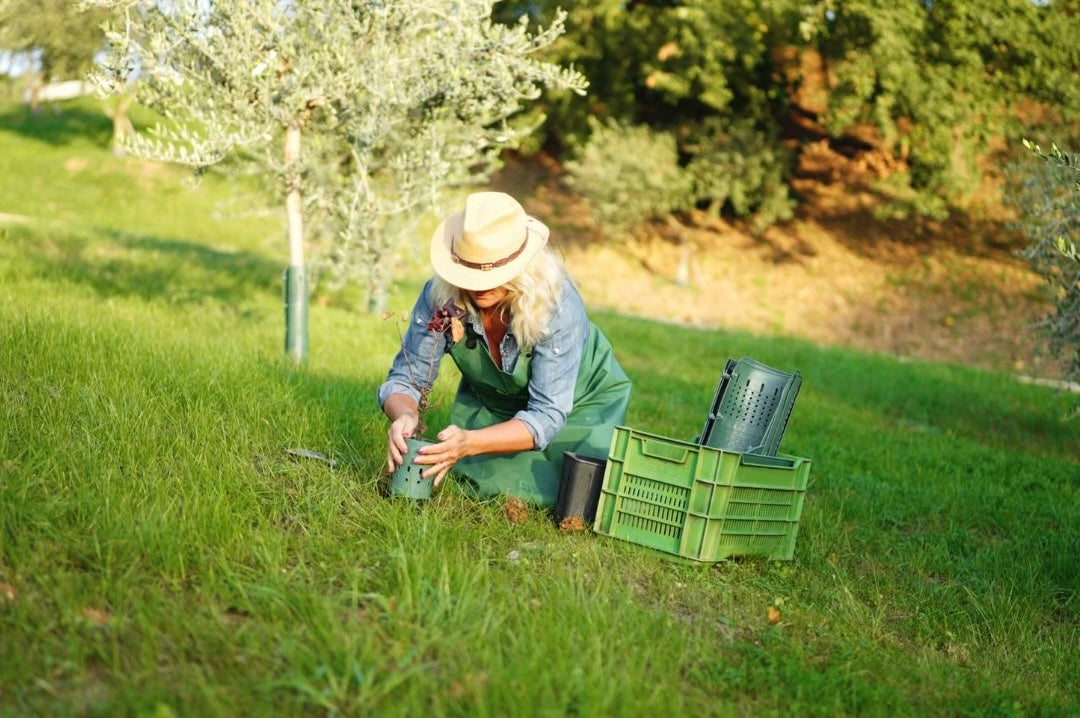
Winter Plant Shelters: Protect Your Green Allies from Frost and Cold
Share
As winter approaches, our gardens face a new set of challenges. While the season brings a magical allure, it also poses challenges to the survival and well-being of our beloved plants and trees. Cold and frost can damage our precious plants, making them struggle to survive. But don't worry, there is a way to protect them during this difficult season: winter shelters for plants.
In this blog, we will explore the importance of using plant shelters and how they can protect your plants from the freezing cold. We know the secrets of winter gardening and learn how to create a warm and cozy haven for your plants to thrive.
Winter Frost and Cold Damage: The Impact of Frost and Cold on Plants
Frost and cold can damage plants and make them unhealthy. When it is very cold, ice crystals can form inside the plant, damaging cells and blocking important plant processes. This can make the plant look droopy, change color, and even cause parts of it to die. Freezing temperatures can also cause water inside cells to expand, which can cause cells to burst and cause permanent damage.
Recognizing Vulnerable Plant Species
Not all plants are equally susceptible to frost and cold damage. Some species have inherent adaptations that allow them to tolerate freezing temperatures better than others. It is crucial to be aware of the vulnerability of different plant species in your garden.
Tender annuals, tropical plants and newly planted or young seedlings are generally more susceptible to frost damage. On the other hand, hardy perennials and cold-hardy plants have natural defenses that help them withstand colder temperatures.
The Role of Winter Plant Shelters: A Protective Microclimate
Winter plant shelters work as a protective microclimate for your plants as they act as a shield against harsh elements, including freezing temperatures, freezing winds, and frost. By enclosing your plants inside a shelter, you create a barrier that helps retain heat and insulate them from the surrounding cold. The shelter traps air around the plants, creating a small, controlled environment inside. This trapped air acts as an insulating layer, reducing heat loss and providing a more stable temperature for plants.

It helps prevent the formation of ice crystals within plant tissues and minimizes the risk of cell damage. Additionally, winter plant shelters offer protection from freezing winds. They act as windbreaks, reducing the direct impact of cold gusts on your plants. This not only prevents excessive moisture loss, but also minimizes the drying effect of winds, helping to maintain the plant's hydration levels.
6 Benefits of Plant Shelter in Winter:
- Extends the growing season: Plant shelters create a warmer environment, allowing you to grow cold-sensitive plants that would struggle or perish in cold conditions. This extends the gardening season and allows a wider variety of plants to be grown.
- Prevents frost damage: By providing a sheltered space, plant shelters prevent frost from settling directly on plants. This reduces the risk of ice forming within their tissues, minimizing cell damage and increasing plants' survival rates during periods of frost.
- Acts as a windbreak: Plant shelters act as barriers against freezing winds, reducing their direct impact on plants. This helps maintain plant hydration levels by minimizing excessive moisture loss and preventing the drying effect of winds.
- Protects from heavy snow and ice accumulation: Winter plant shelters offer protection against the weight of snow and ice by preventing plant branches from bending or breaking. Ensures the structural integrity of your plants.
- Provides a Controlled Microclimate: Plant shelters also create a protective microclimate around your plants. The air trapped inside the shelter acts as an insulator, reducing heat loss and providing a more stable temperature for the plants.
- Increase Plant Survival Rate: By providing a supportive and protected environment, plant shelters increase your plants' chances of survival during harsh winter conditions. They offer a higher level of protection, reducing stress on plants and promoting their overall health and well-being.
How to Choose the Right Shelter for Winter Plants
- Evaluating Plant Size and Quantity: Consider the size and quantity of your plants when selecting a winter plant shelter. Make sure the shelter can comfortably accommodate the plants without overcrowding, allowing for proper air circulation and growth.
- Assess Shelter Durability and Insulation: Look for a winter plant shelter that is durable and can withstand adverse weather conditions. Consider the quality of material and construction to ensure longevity. Also, prioritize shelters with good insulation properties to provide effective protection against cold temperatures.
- Considering budget and space limitations: Take your budget and available space into consideration when choosing a winter plant shelter. Determine your budget range and explore options that fit within it. Consider the space available in your garden or designated area for installing the shelter, ensuring that it is in line with the dimensions and requirements of the shelter you select.

Winter Shelters for Plants: Protect Your Plants with Oppplant's Quality Solutions
Discover the reliable and high-quality winter plant shelters offered by Oppplant to safeguard your plants during the harsh winter season. Our shelters are designed to withstand winter weather, providing reliable insulation against freezing temperatures and frost damage. Available in various sizes, they accommodate plants of different sizes and quantities.
At Oppplant , we believe in affordability without compromising on quality, ensuring that our shelters suit various budget ranges. With our winter plant shelters, you can rest assured that your plants are protected and have the best chance of thriving. Visit our store today and experience the difference.
Additional Winter Plant Protection Strategies and Plant Care Tips
In addition to using winter plant shelters, there are many other plant care strategies and tips to ensure the well-being of your plants during the cold season.
You can simply apply a layer of mulch around the base of your plants to insulate the soil and retain moisture. Water your plants deeply before the first frost to help them withstand dry winter conditions. Consider using frost blankets or row covers to provide extra protection on particularly cold nights.
It is also advisable to prune any dead or damaged branches before winter to encourage healthier growth in spring. Finally, monitor the weather forecast and adjust your grooming routine accordingly. With these strategies and tips, you can improve your plants' winter hardiness and enjoy lush greenery in spring.
Conclusion: Protect Plants During the Winter
As the winter season approaches, it is essential to implement effective strategies to protect and nourish your plants. From using winter plant shelters to incorporating additional care practices, you can create a resilient environment for your green allies. Remember to evaluate the size and needs of your plants, choose durable shelters, and consider budget and space limitations.
Combine these efforts with other winter plant protection strategies such as mulching, adequate watering, using frost blankets and pruning. By investing time and care in your plants over the winter, you'll be rewarded with a vibrant, lush garden come spring. Embrace the beauty of the winter season while ensuring the health and vitality of your beloved plants. Thank you so much for being with us until the end.
